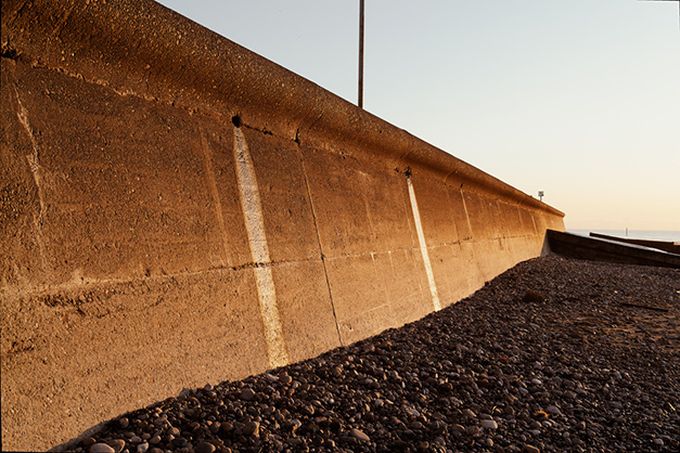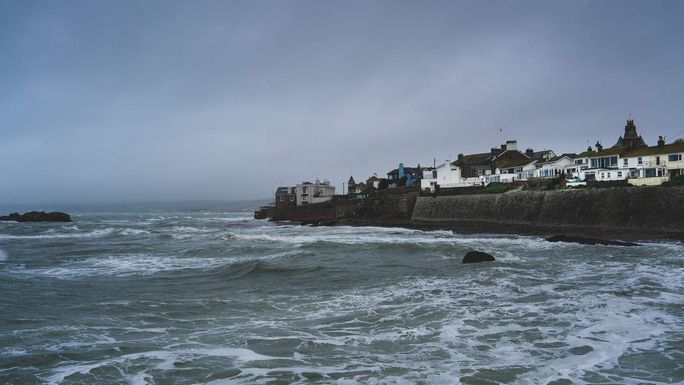What is a Shoreline Management Plan?

A Shoreline Management Plan (SMP) is a strategy for managing flood and erosion risk for a particular stretch of coastline – known as a policy unit – over the short, medium and long term. SMPs identify the best ways to manage coastal flood and erosion risk to people and the developed, historic and natural environment.
Who makes an SMP?
SMPs are developed by Coastal Groups, which comprise members from local authorities and the Environment Agency in England and Wales.
Are SMPs statutory?
An SMP is a non-statutory policy document for coastal defence management planning. Taking account of other planning initiatives and legislative requirements, it is intended to inform wider strategic planning.
What does an SMP have to consider?
An SMP must take the following four factors into account:
- Coastal processes: waves, tides, near-shore currents, weathering, erosion, sediment transport and deposition, organic activity and changes in sea level
- Historic environment: all aspects of the environment resulting from the interaction between people and places through time, including all surviving physical remains of past human activity, whether visible, buried or submerged
- Built/developed environment: the surroundings that provide the setting for human activity, including buildings, parks, energy and water infrastructure, transport networks and flood defences
- Natural environment: all living and non-living things that occur naturally
What is included in an SMP?

An SMP contains the current defence strategy for a given stretch of coastline. But it is a live working document and can therefore be changed to incorporate new information. This might arise from new planning requirements, a change in environmental factors or an improved understanding of natural processes influencing the evolution of the coast.
The government publishes guidance on what should be included in an SMP and how to go about preparing or updating it.
What are the policy options?
The government’s guidance sets out the following four SMP policy options:

Hold the line (HTL)
Build or maintain artificial defences to keep the current position of the shoreline. This can involve maintaining or changing the standard of protection.

Advance the line (ATL)
Build new defences on the seaward side of the original defences. This is rarely used and is limited to policy units where significant land reclamation is considered.

Managed realignment (MR)
Allow the shoreline to move backwards or forwards naturally, but manage the process to direct it in certain areas.

No active intervention (NAI)
No planned investment in coastal defences or operations, regardless of whether an artificial defence has existed before or not.
What area and period does an SMP cover?

An SMP sets the management strategy for three periods, known as epochs:
- Short term: 0-20 years
- Medium term: 20-50 years
- Long term: 50-100 years
The strategy doesn't have to vary for each of the epochs. An SMP should identify the combination of policies that’s likely to be practical and acceptable over the next 100 years.
When SMPs were introduced in 1995, the coastline of England and Wales was divided into 11 primary coastal cells, which were further divided into sub-cells that are relatively self-contained units with respect to the movement of beach material.
These sub-cells form the basis of the coastline section for each of the SMPs in England and Wales. Some Scottish local authorities have followed this process and identified self-contained stretches of coastline that are suited to an SMP.
Does the SMP identify solutions?
The SMP defines the policy options for each section of coastline, but not the solutions for achieving that policy. More stages are required to move from the policy options identified in the SMP to schemes for implementation.
| Stages in assessing the risks of flood and erosion | |||
|---|---|---|---|
| Stage | SMP | Strategy | Scheme |
| Aim | To identify policies to manage risks | To identify appropriate schemes to put the policies into practice | To identify the type of work to put the preferred scheme into practice |
| Delivers | A wide-ranging assessment of risks, opportunities, limits and areas of uncertainty | Preferred approach, including economic and environmental decisions | Compare different options for putting the preferred scheme into practice |
| Output | Policies | Type of scheme (such as a seawall) | Design of works |
| Outcome | Improve management for the coast over the long-term | Management measures that will provide the best approach to managing floods and the coast for a specified area | Reduce risks from floods and coastal erosion to people and assets |
Many countries have adopted shoreline management or adaptation plans that seek to balance the multiple resources and uses of a shoreline. These include New Zealand and some European and Caribbean countries, as well as some US states.
Sign up to receive news from ICE Knowledge direct to your inbox.






